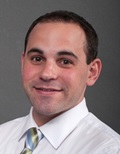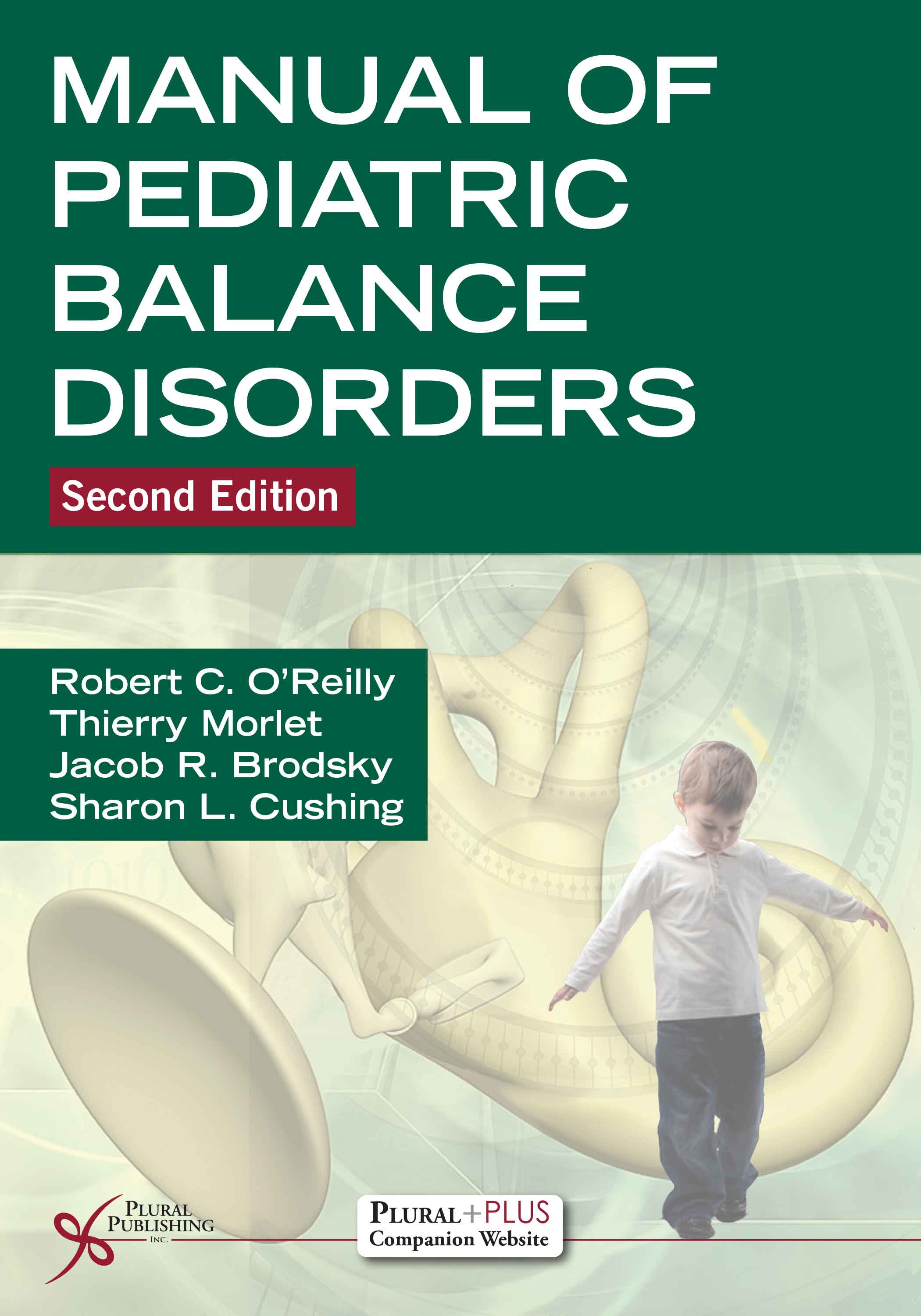
Manual of Pediatric Balance Disorders
Second Edition
Robert C. O'Reilly, Thierry Morlet, Jacob R. Brodsky, Sharon L. Cushing
Details: 458 pages, B&W, Softcover, 7" x 10"
ISBN13: 978-1-63550-146-9
© 2020 | Available
Purchase
This thoroughly updated second edition of Manual of Pediatric Balance Disorders remains a vital resource for clinicians and students specializing in pediatric vestibular and balance disorders. The text is organized for effective use in the clinic, classroom, bedside, or laboratory, and is separated into four parts: Basic Mechanisms, Clinical Evaluation, Pediatric Vestibular Disorders, and Treatment. Each chapter ends with Self-Assessment Questions to aid in reader comprehension and address important chapter topics.
Manual of Pediatric Balance Disorders features contributions from 45 experts across the fields of otolaryngology, audiology, neurology, and physical therapy, and represents the distillation of years of cumulative clinical and research experience.
New to the Second Edition
- New Co-Editor, Jacob R. Brodsky, MD, FACS, FAAP
- Five new chapters with the latest research and findings on various testing and topics in pediatric balance disorders
- Chapter 7. Video Head Impulse Testing (vHIT)
- Chapter 12. New Horizons for the Evaluation of Functional Balance, Self-Motion Perception, Navigation, and Mobility
- Chapter 13. Genetics and Metabolism in Pediatric Vestibular Disorders
- Chapter 15. Benign Paroxysmal Positional Vertigo (BPPV)
- Chapter 24. Vertigo, Dizziness and Mental Health
- Fully rewritten chapters on migraine and concussion
- Updated references and self-assessment questions throughout
- Access to a PluralPlus companion website with videos and figures
This video demonstrates the Midline Head Hang Maneuver and can be found in Chapter 15 on the companion website accompanying this book.
Reviews
"The chapters are divided into four sections. Essentially these are the basic sciences, clinical investigation, vestibular disease processes and treatment. Each chapter features nicely set out text with many a boxed heading, allowing for easy reading and browsing. Monochrome illustrations are plentiful and well reproduced. [...] Any chapter title starting “New Horizons” was bound to prove welcome. Genetics and Metabolism looked daunting at first glance and it certainly was “comprehensive”, but actually proved to be written in a very comprehensible style e.g. with headings such as “When to suspect” or “Family History Interpretation”. Benign Paroxysmal Positional Vertigo now rates its own chapter, but particularly impressive was Chapter 24 “Vertigo, Dizziness and Mental Health”, which I thought the star of the new content. This is a very well updated and expanded revision of what was a very important book at its first publication."
—Liam M. Flood, FRCS, FRCSI, in Journal of Laryngology & Otology (March 2020)
"We all need to do our part to help identify and manage underdiagnosed vestibular and balance disorders in pediatric patients. To help, I would highly recommend investing in the second edition of the Manual of Pediatric Balance Disorders to all pediatric and vestibular audiologists."
—Janine Verge, AuD, Aud(C), in Canadian Audiologist (July 2020)
"This is a very welcome and recently updated book for those wishing to learn about paediatric balance disorders. It has a multidisciplinary authorship and therefore all the specialties involved in the management of a child with balance problems should be able to expand their knowledge in their area, as well as learn from the experienced authors in other specialties.
The 458 pages cover four sections: basic anatomy and physiology mechanisms, clinical assessment, pathologies affecting the balance system, and management. Due to the range of topics being covered, the chapters are generally short and concise.
The basic mechanisms section is very readable and covers both the normally developing systems and vestibular adaptation and compensation mechanisms. The clinical evaluation section has eight chapters, covering topics from bedside testing, vHIT, VEMPS to gait analysis. These chapters cover tips and tricks for successful testing in children. The largest section covers pathologies impacting on the vestibular system. There is a whistle-stop chapter on genetic and metabolic conditions. The chapter on peripheral vestibular disorders also covers the impact of cochlear implantation. There is also an interesting chapter on vestibular dysfunction in concussion, an area of concern for youth sports e.g. rugby. Other chapters include central conditions, migraines, ocular and movement disorders. There was also a short chapter covering some mental health issues and balance-related presentations. The treatment section covers sensory processing, vestibular rehabilitation and environmental adaptations. There are self-assessment questions at the end of each section. There are also 28 helpful videos available on the publisher’s companion website for the book.
This book manages to cover a wide range of topics across the paediatric vestibular field, covering many of the key pertinent issues, in a book small enough to carry. It’s well worth buying."
—Veronica Kennedy, FRCS Ed(Oto), FRCP, FRCPCH, Consultant in Audiovestibular Medicine, Paediatric Audiology Service, Bolton NHS Foundation Trust, Halliwell Children’s Centre, Bolton, in ENT & Audiology News (March 2021)
“[…] This book is really something more than a pure “manual” and it is a real help for the clinician in this very poorly known and underestimated (and probably untreated) … and it demystifies some false beliefs such as that BPPV is a rare in childhood […]
Of particular interest the five new chapters with the latest research and findings on various testing and topics in pediatric balance disorders. Very important the vHIT, the BPPV in children and the chapter on “genetic and metabolism in pediatric vestibular disorders”.
Each chapter ends with a self-assessment questionnaire to aid the comprehension.”
—Alessandro Martini, Padova University Research Center “I-APPROVE-International Auditory Processing Project in Venice”, “Santi Giovanni e Paolo” Hospital, in the Italian Journal of Audiology and Phoniatrics (June 2021)
“…This book has been called a “manual” to reflect the role it can play in university lectures, clinics, bedside counselling and in research. It is a great resource for any clinician who is interested in paediatric balance disorders. This book is very easy to read with a lot of explanations and references. There are also self-assessment questions at the end of each chapter to test knowledge.
This edition features contributions from 45 experts, with 5 new chapters covering the latest research, testing procedures and clinical applications. These include vHIT, evaluation of functional balance, genetics, BPPV and dizziness and mental health. It is presented in 4 main sections.
The book commences with a good overview of the anatomy and embryology of the vestibular system, giving details of how the balance system develops in-utero. The maturation of the balance system throughout the early years of life is also discussed. There is a very good section on vestibular-induced reflexes and their development. The last chapter in this section covers vestibular adaptation and compensation and the role of vestibular rehabilitation to optimise the adaption process.
[The Clinical Evaluation] section comprises 9 chapters. It begins with how to perform a history and physical examination of a child with a balance disorder. The vestibular test battery (VNG, Rotary chair, vHIT and VEMP) are discussed with guidance on how to adapt these tests for babies and children. Expected results for each test are detailed. The last chapters explain static and dynamic balance assessments, gross motor tests, gait analysis and the evaluation of functional balance. These ‘real life’ assessments are important to help devise intervention appropriate to the child’s lifestyle and needs.
[Pediatric vestibular disorder] is a series of 12 chapters looks at a range of balance disorders which can affect the pediatric population. The section starts with genetic conditions which can affect balance, their clinical features and how to categorize genetic balance disorders. The next chapters cover different disorders that can cause balance issues. Disorders discussed include peripheral vestibular dysfunction, BPPV, vestibular migraine, concussion, lesions of the CNS, neurodegenerative diseases, seizures, movement disorders and more. The section concludes with a chapter on dizziness and mental health. Persistent Postural-perceptual dizziness (PPPD) is discussed, including diagnostic criteria, clinical presentation, and intervention.
The last section of the book discusses treatment of dizziness in children. When a child’s balance is in question advice is generally sought from Occupational Therapists to look for sensory integration issues which may be contributing to the problem. This section discusses various treatments, vestibular rehabilitation and adapting the child’s environment to help with balance issues.
This book concludes with a discussion about current and future research and challenges. There is an enticing look at future possibilities of vestibular implants, gene therapy and stem cell therapy.
I really enjoyed this book and learned a lot about pediatric balance issues and how they present and differ from the adult population. It is a valuable resource in learning more about balance issues in the pediatric population.”
–Celia Chapman, Audiologist, Interacoustics, in Audiology Australia (April 2022)
“… an outstanding compilation of the basic science, clinical evaluation, review of specific clinical disorders, and treatment of pediatric balance problems.
For an otolaryngologist, the cross-specialty chapters are particularly rich in new information.
The seizure disorder chapter is presented as a case presentation as a heuristic for understanding an area that we otolaryngologists rarely manage.
The chapter on pediatric movement disorders includes discussions of chorea, tremor, ataxia, and ties, which are not usually included in an otolaryngology text but provide excellent overviews of these conditions.
The text is quite user-friendly with generous replication of questionnaires and tables summarizing otherwise difficult to understand concepts.
A highlight of the book are self-assessment questions at the end of each chapter. When the reader is in doubt, there is a useful answer section at the very end of the textbook following the last chapter.
This textbook is a must read for anyone who manages children with balance disorders.
… an excellent reference for diagnosing and managing challenging pediatric vestibular patients.”
– Moises Arriaga, M.D., M.B.A., F.A.CS., Louisiana State University Medical School, in Otology and Neurotology (July 2023)
Preface
Acknowledgements
About the Editors
Contributors
Section I. Basic Mechanisms
Chapter 1. Anatomy and Embryology of the Vestibular Apparatus
Richard Vincent, Huseyin Isildak, Michael Teixido
Chapter 2. Physiology and Maturation of Balance Mechanisms
Thierry Morlet
Chapter 3. Vestibular Adaptation and Compensation
James O. Phillips
Section II. Clinical Evaluation
Chapter 4. History and Physical Examination of the Child With a Balance Disorder
Sharon L. Cushing, Jessica R. Levi, and Robert C. O'Reilly
Chapter 5. Videonystagmography/Electronystagmography Testing with Children
Emily F. Zwicky
Chapter 6. Rotary Chair Testing
James O. Phillips
Chapter 7. Video Head Impulse Testing (vHIT)
Guangwei Zhou, Violette H. Lavender, and Vincent G. Wettstein
Chapter 8. Vestibular-Evoked Myogenic Potential Testing (VEMP) Testing
Sylvette Wiener-Vacher and Guangwei Zhou
Chapter 9. Static Balance: Computerized Dynamic Posturography
Eugen Ionescu, Pierre Reynard, Nathalie Goulème, and Hung Thai-Van
Chapter 10. Dynamic Balance and Gross Motor Assessment
Anne Scofich and Renée Haldenby
Chapter 11. Gait Analysis
John Henley, Tim A. Niiler, and Freeman Miller
Chapter 12. New Horizons for the Evaluation of Functional Balance, Self-Motion Perception, Navigation, and Mobility
Jennifer L. Campos, Claire McSweeny, Karen A. Gordon, and Sharon L. Cushing
Section III. Pediatric Vestibular Disorder
Chapter 13. Genetics and Metabolism in Pediatric Balance Disorders
Lance H. Rodan and Melissa B. Ramocki
Chapter 14. Peripheral Vestibular Dysfunction
Sharon L. Cushing and Jane Lea
Chapter 15. Benign Paroxysmal Positional Vertigo (BPPV)
Sophie E. Lipson and Jacob R. Brodsky
Chapter 16. Vestibular Migraine and the Pediatric Migraine Variants
Henri Traboulsi, Margaretha L. Casselbrant, and Jacob Brodsky
Chapter 17. Vestibular Dysfunction in Pediatric Concussion
Jacob R. Brodsky
Chapter 18. Structural Lesions of the Central Nervous System
Shelly Wang and George M. Ibrahim
Chapter 19. Neurodegenerative Diseases
David R. Lynch, Abigail Lynch, and Kimberly Schadt
Chapter 20. Seizure Disorders
Christina Y. Go
Chapter 21. Pediatric Movement Disorders
Teesta Soman and Ana Marissa Lagman-Bartolome
Chapter 22. Ocular and Oculomotility Abnormalities in Children
Y. Arun Reginald
Chapter 23. Postural Orthostatic Tachycardia Syndrome
Stephanie A. Moody Antonio
Chapter 24. Vertigo, Dizziness, and Mental Health
Gillian Liberman, Wanda A. Dillon, Philip Gerretsen, and Sharon L. Cushing
Section IV. Treatment
Chapter 25. Multisensory Deficits
Joan Vertes
Chapter 26. Vestibular Rehabilitation
Michael Karl
Chapter 27. Environmental Adaptations
Morai Pena, Nicole Captain, and Janet Woodhouse
Chapter 28. Current and Future Research and Challenges
Sharon L. Cushing and Robert C. O’Reilly
Self-Assessment Answer Key
Index
Purchase of Manual of Pediatric Balance Disorders, Second Edition comes with access to supplementary materials on a PluralPlus companion website.
To access the materials, you must first register the access code printed on the inside front cover of your book on the companion website.
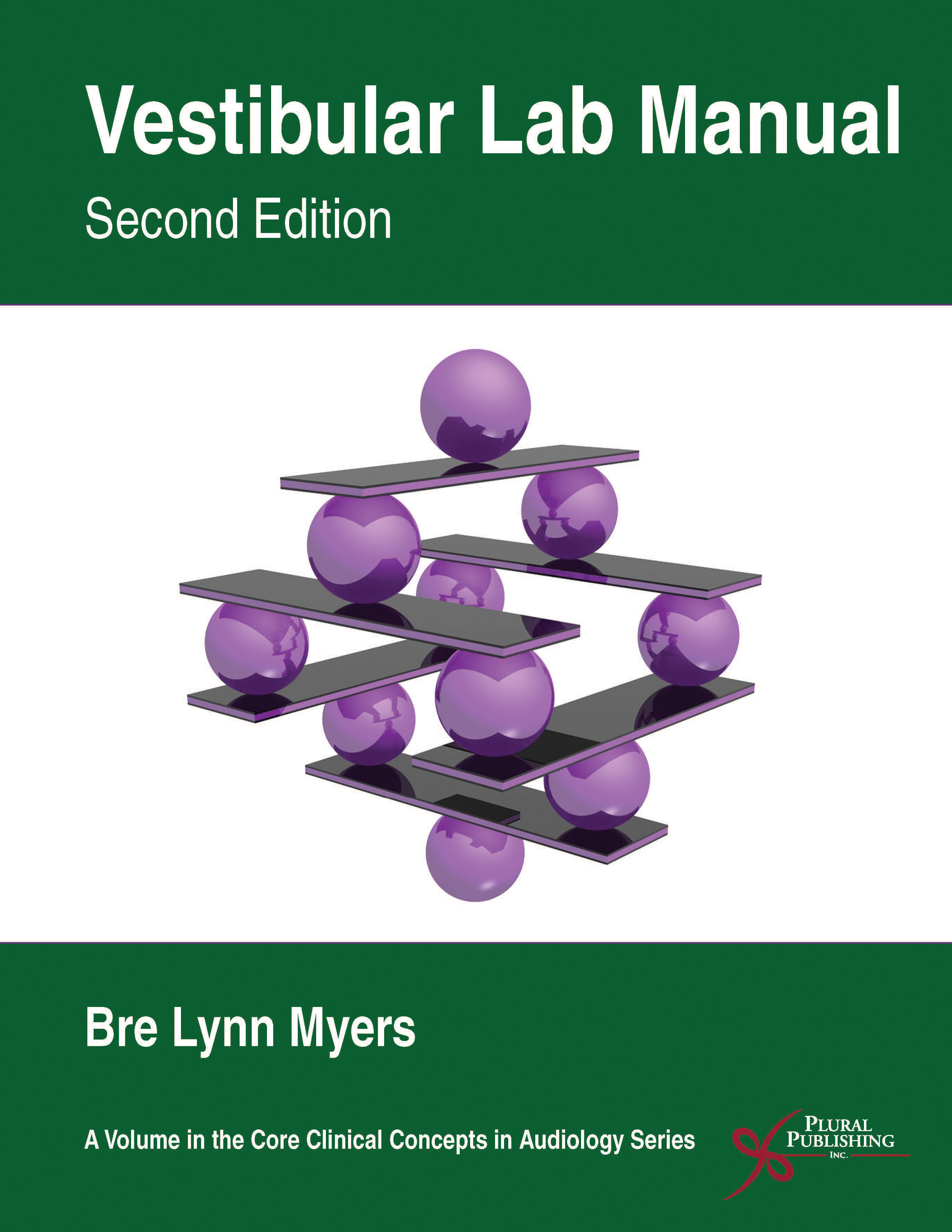
Vestibular Lab Manual
Second Edition
Bre Lynn Myers
Details: 170 pages, B&W, Spiral Bound, 8.5" x 11"
ISBN13: 978-1-63550-080-6
© 2020 | Available
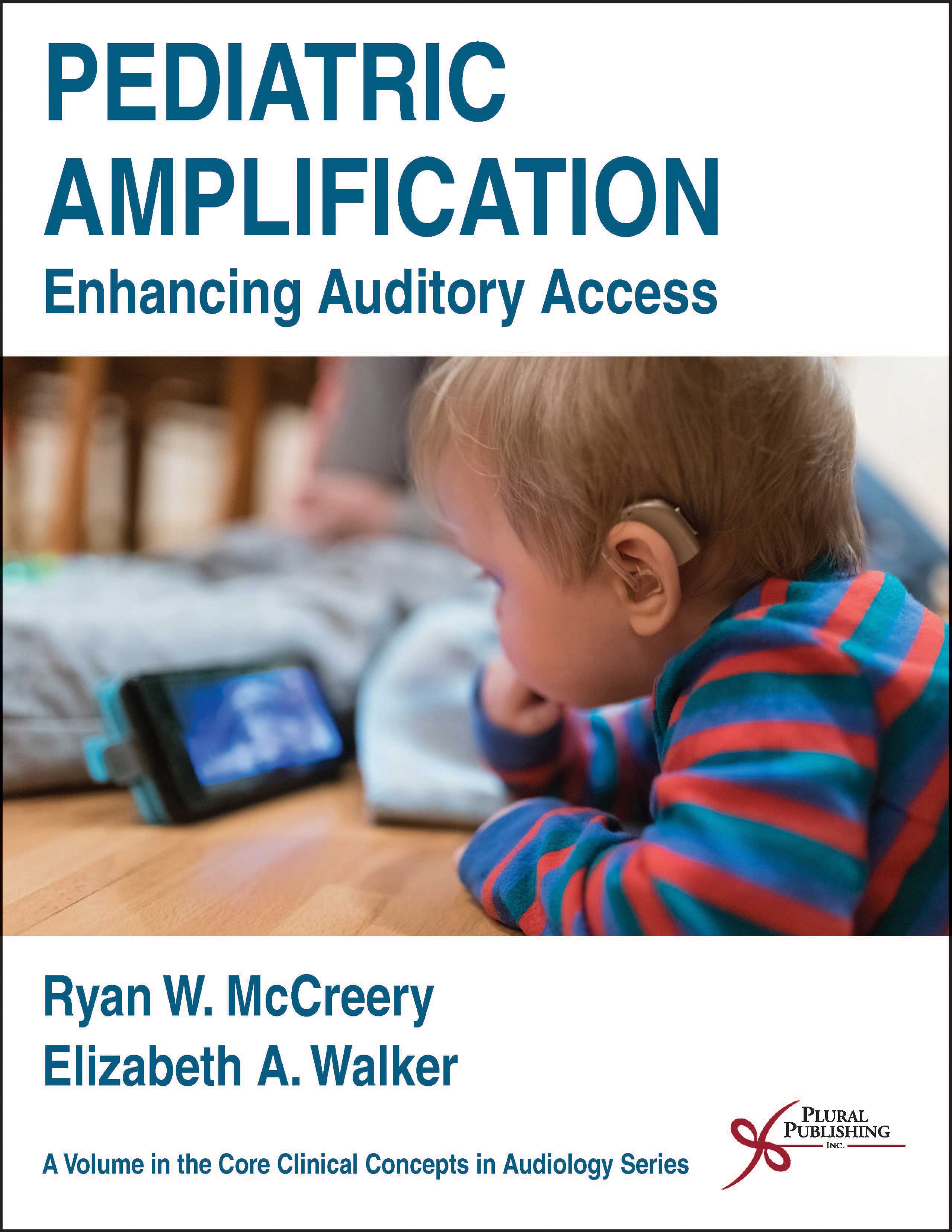
Pediatric Amplification: Enhancing Auditory Access
First Edition
Ryan W. McCreery, Elizabeth A. Walker
Details: 272 pages, B&W, Softcover, 8.5" x 11"
ISBN13: 978-1-59756-992-7
© 2017 | Available
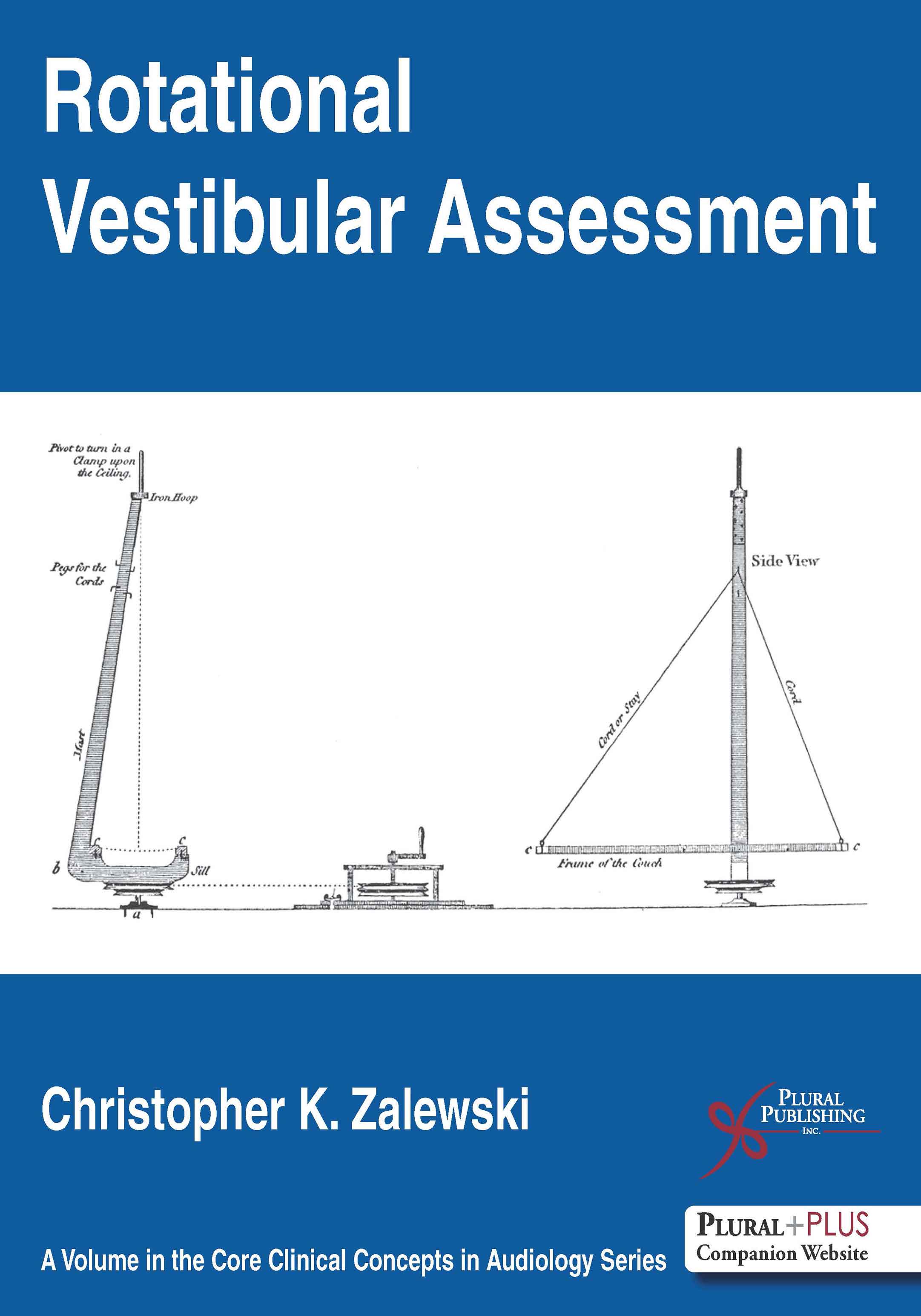
Rotational Vestibular Assessment
First Edition
Christopher K. Zalewski
Details: 322 pages, Full Color, Softcover, 8.5" x 11"
ISBN13: 978-1-59756-797-8
© 2018 | Available
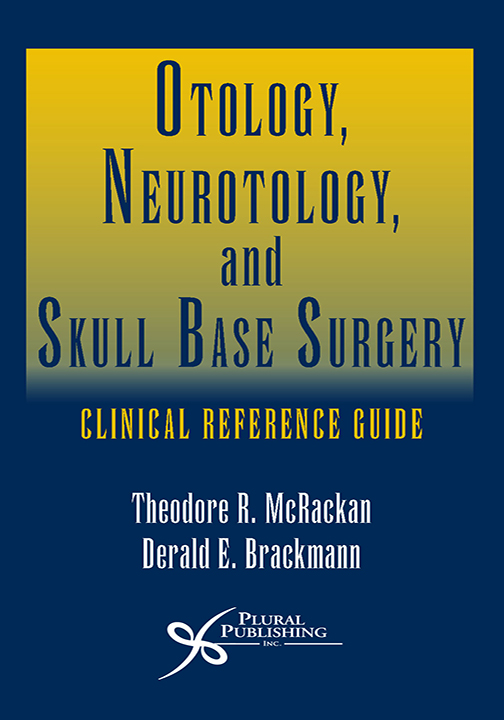
Otology, Neurotology, and Skull Base Surgery: Clinical Reference Guide
First Edition
Theodore R. McRackan, Derald E. Brackmann
Details: 593 pages, B&W, Softcover, 4.5" x 8"
ISBN13: 978-1-59756-651-3
© 2016 | Available
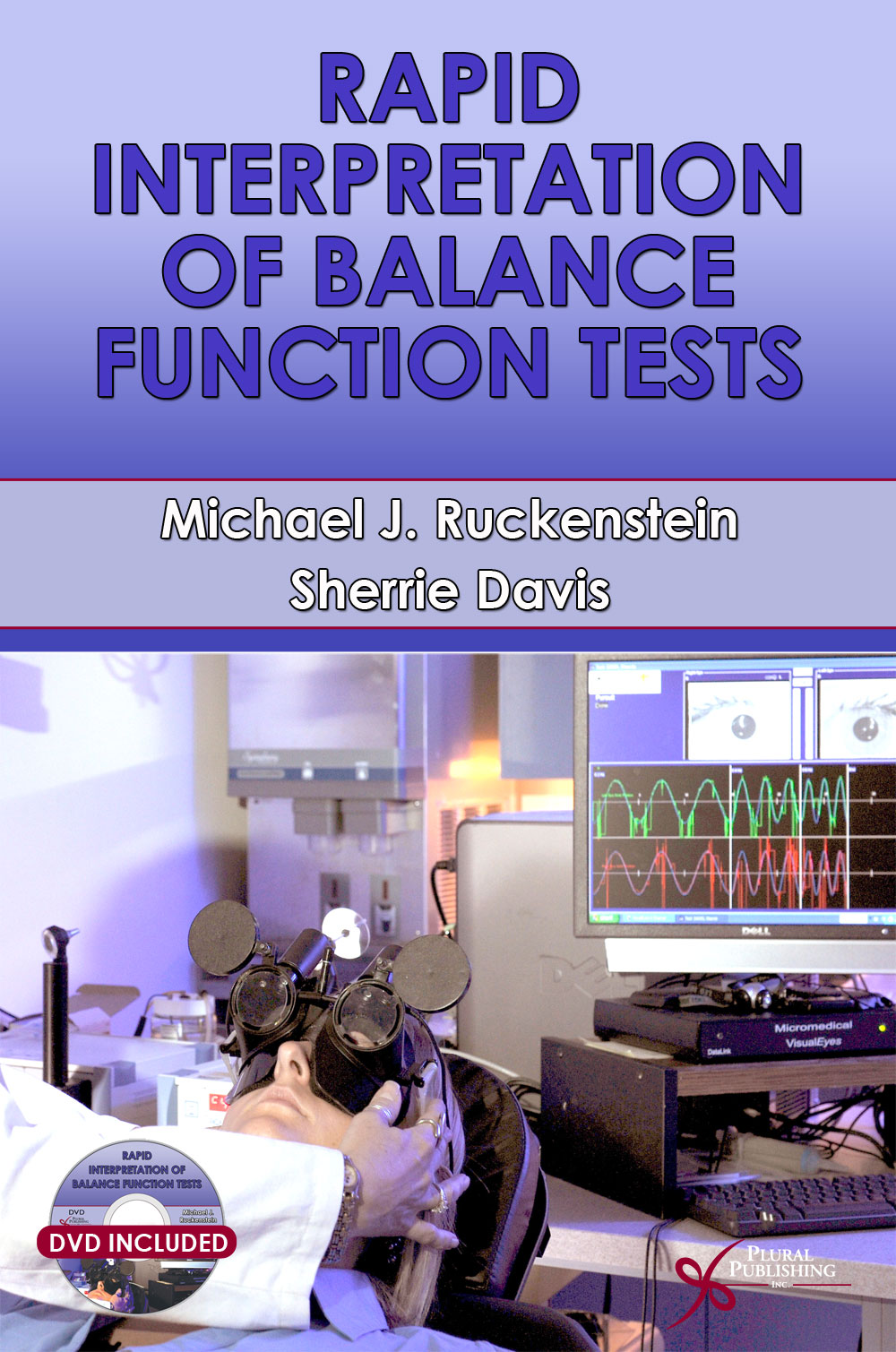
Rapid Interpretation of Balance Function Tests
First Edition
Michael J. Ruckenstein, Sherrie Davis
Details: 168 pages, B&W, Softcover, 6" x 9"
ISBN13: 978-1-59756-443-4
© 2015 | Available
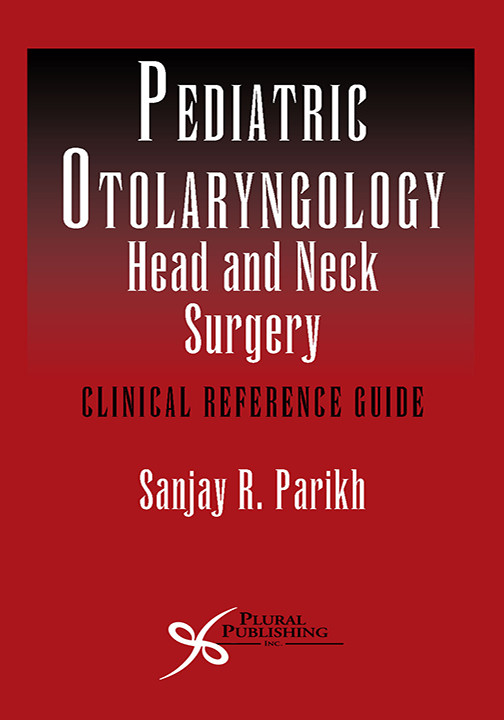
Pediatric Otolaryngology-Head and Neck Surgery: Clinical Reference Guide
First Edition
Sanjay R. Parikh
Details: 752 pages, B&W, Softcover, 4.5" x 8"
ISBN13: 978-1-59756-528-8
© 2014 | Available
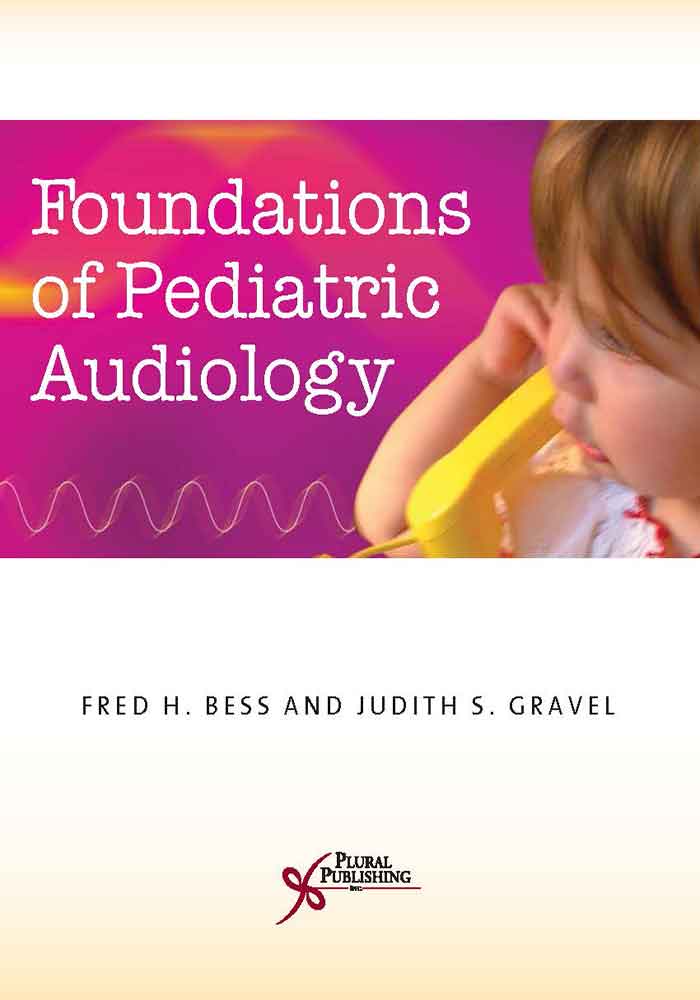
Foundations of Pediatric Audiology
First Edition
Fred H. Bess, Judith Gravel
Details: 507 pages, B&W, Softcover, 8.5" x 11"
ISBN13: 978-1-59756-108-2
© 2006 | Available
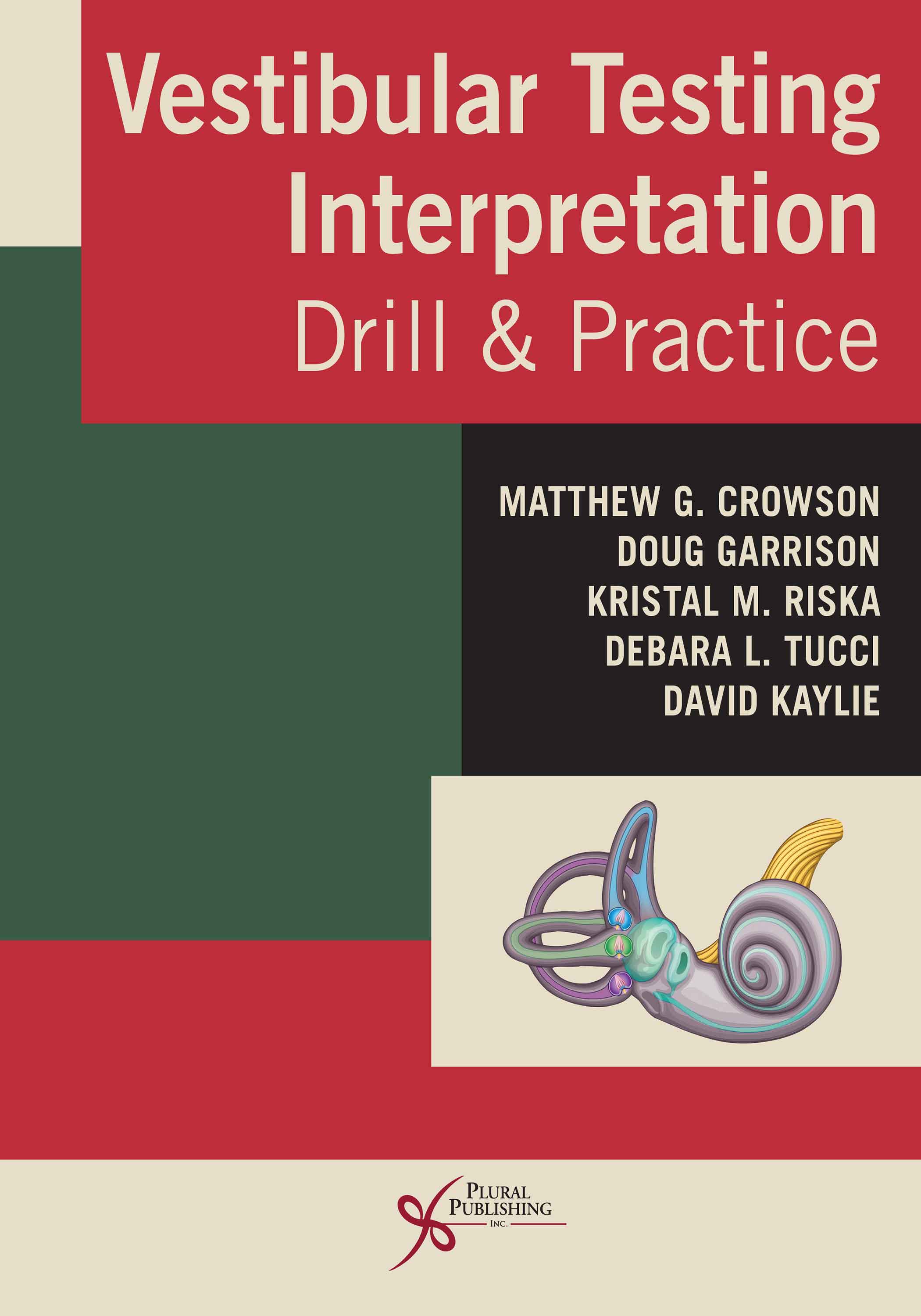
Vestibular Testing Interpretation: Drill and Practice
First Edition
Matthew G. Crowson, Douglas B. Garrison, Kristal M. Riska, Debara L. Tucci, David Kaylie
Details: 145 pages, B&W, Spiral, 8.5" x 11"
ISBN13: 978-1-63550-105-6
© 2020 | Available
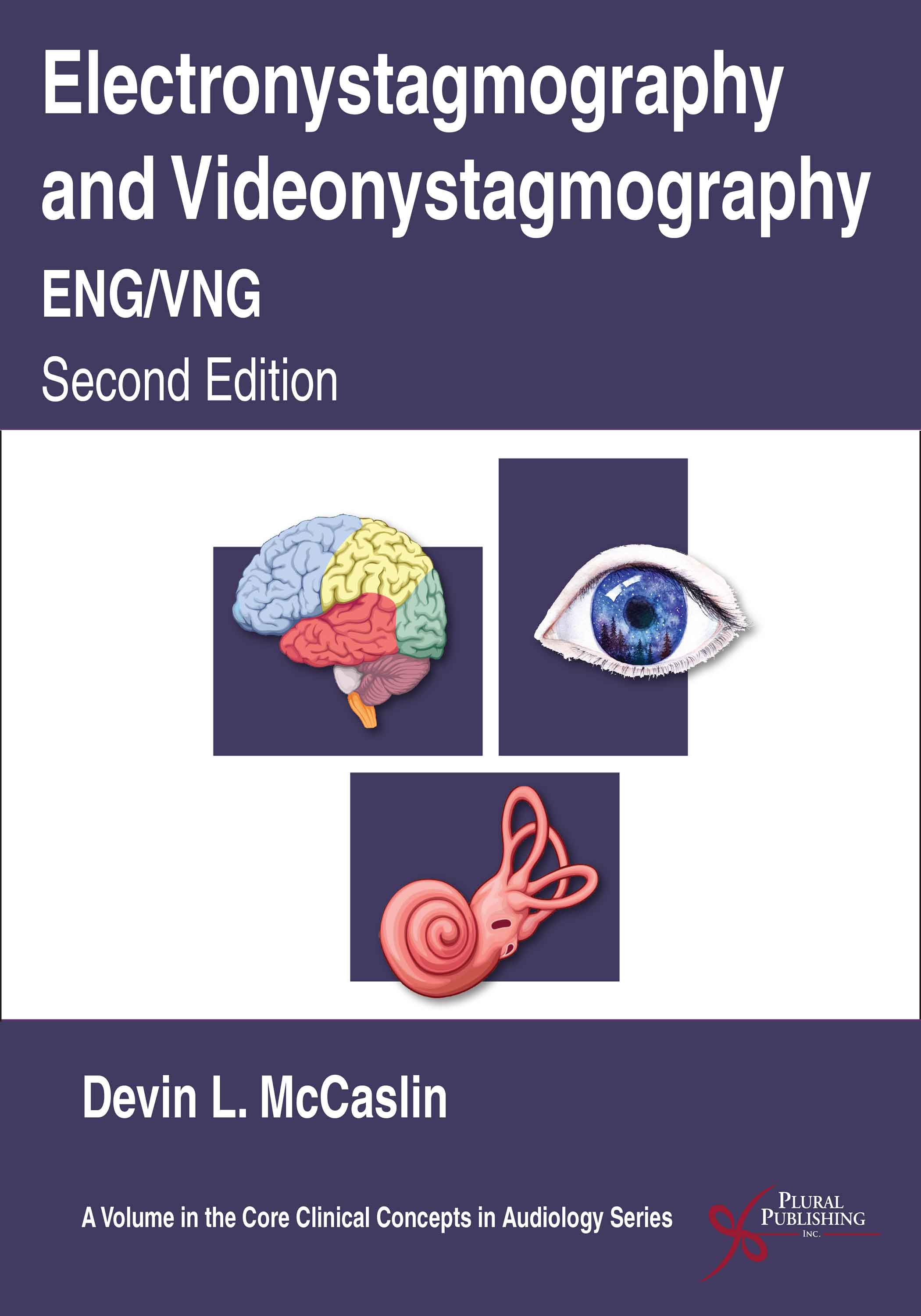
Electronystagmography and Videonystagmography (ENG/VNG)
Second Edition
Devin L. McCaslin
Details: 278 pages, B&W, Softcover, 8.5" x 11", Includes videos
ISBN13: 978-1-63550-081-3
© 2020 | Available
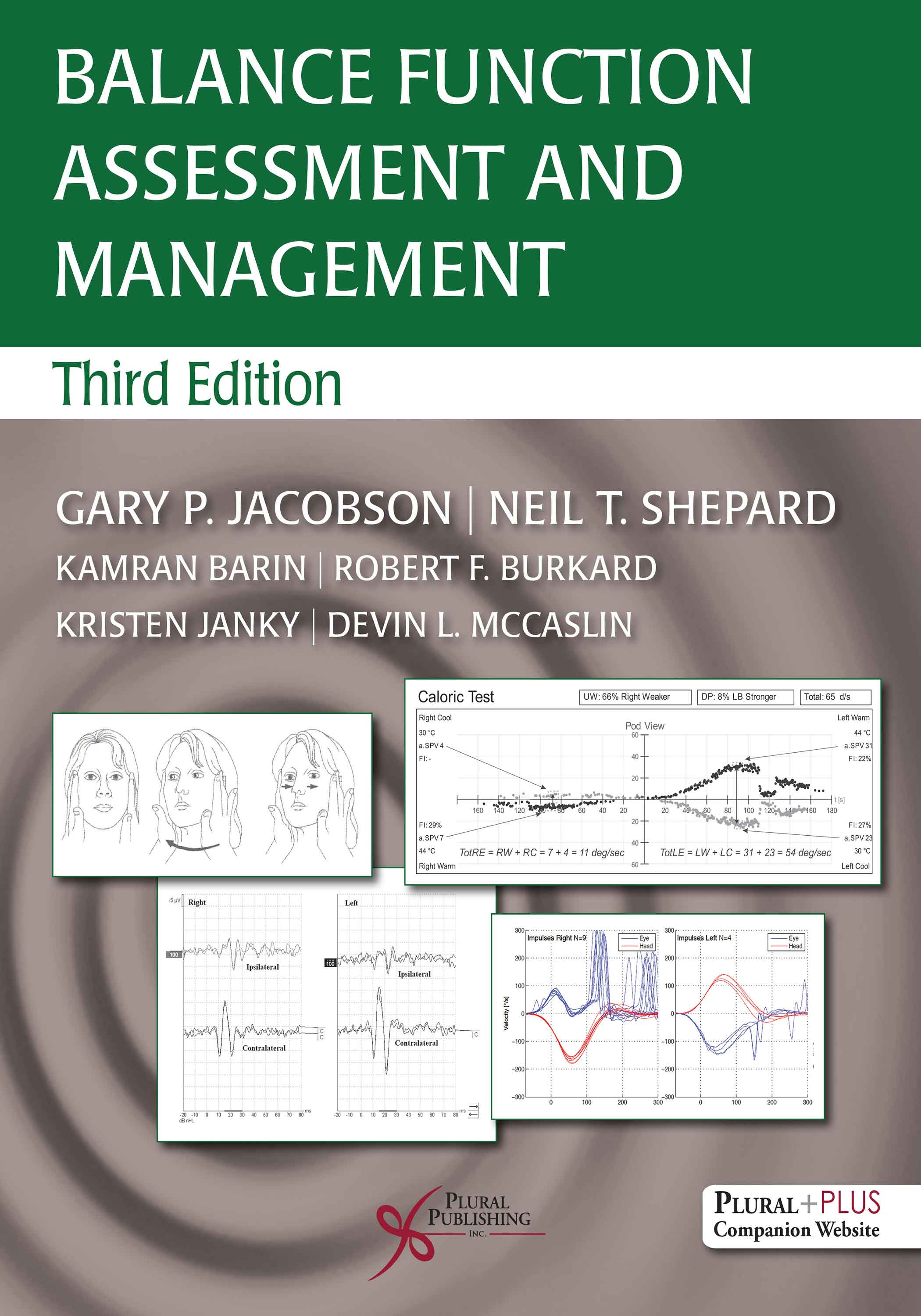
Balance Function Assessment and Management
Third Edition
Gary P. Jacobson, Neil T. Shepard, Kamran Barin, Robert F. Burkard, Kristen Janky, Devin L. McCaslin
Details: 717 pages, B&W, Hardcover, 8.5" x 11"
ISBN13: 978-1-63550-188-9
© 2021 | Available
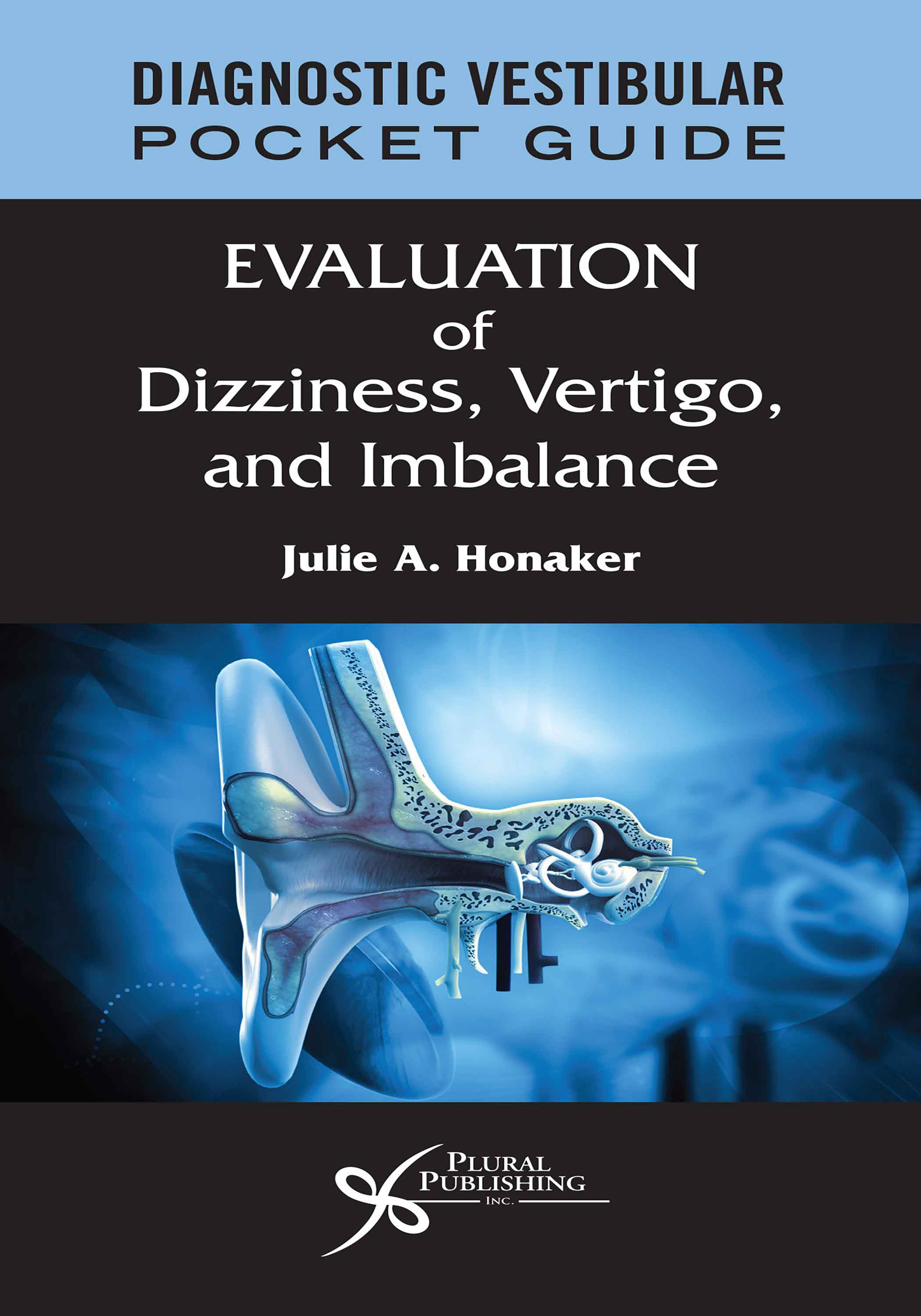
Diagnostic Vestibular Pocket Guide: Evaluation of Dizziness, Vertigo, and Imbalance
First Edition
Julie A. Honaker
Details: 288 pages, B&W, Softcover, 4.5" x 8"
ISBN13: 978-1-63550-312-8
© 2021 | Available



